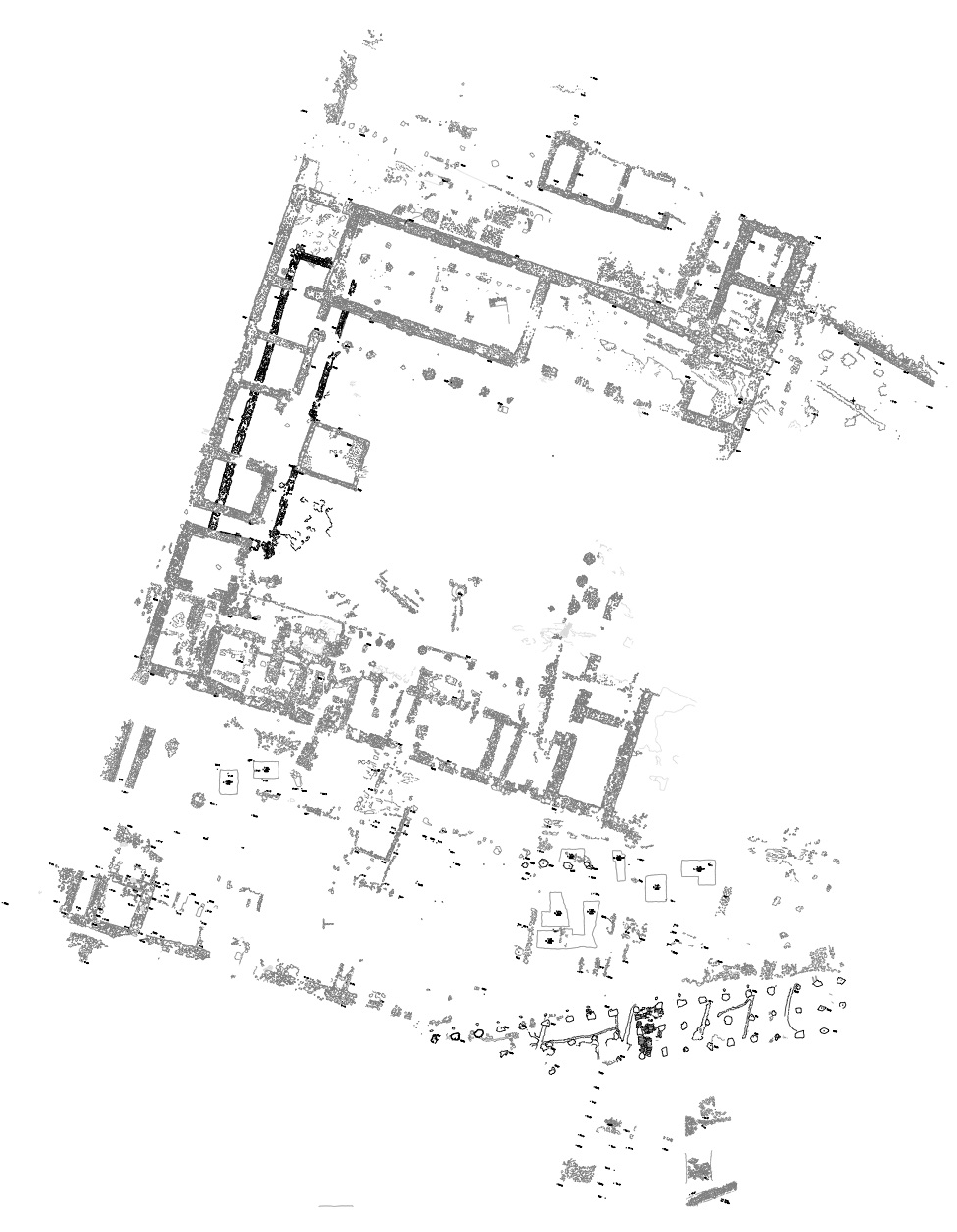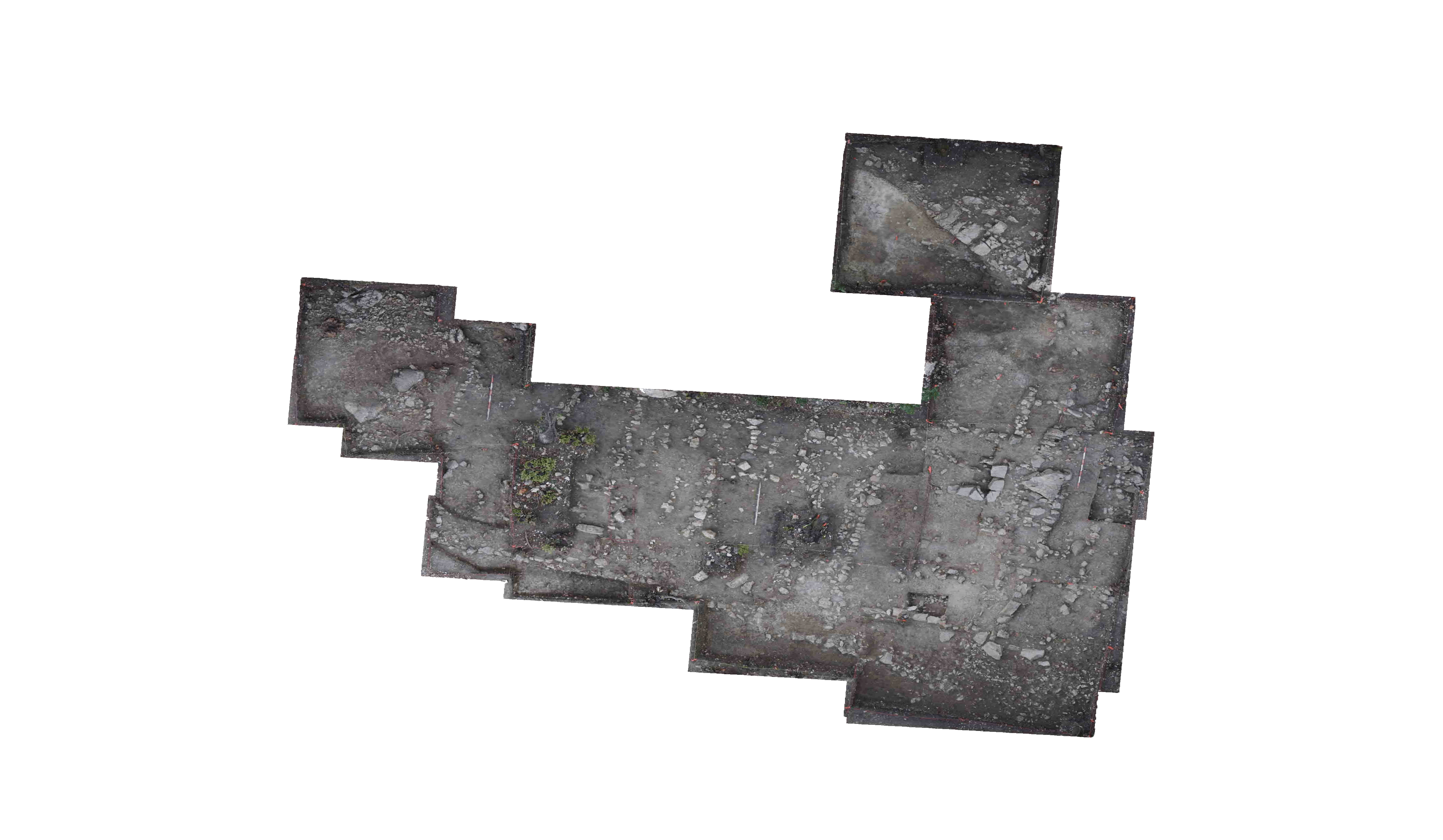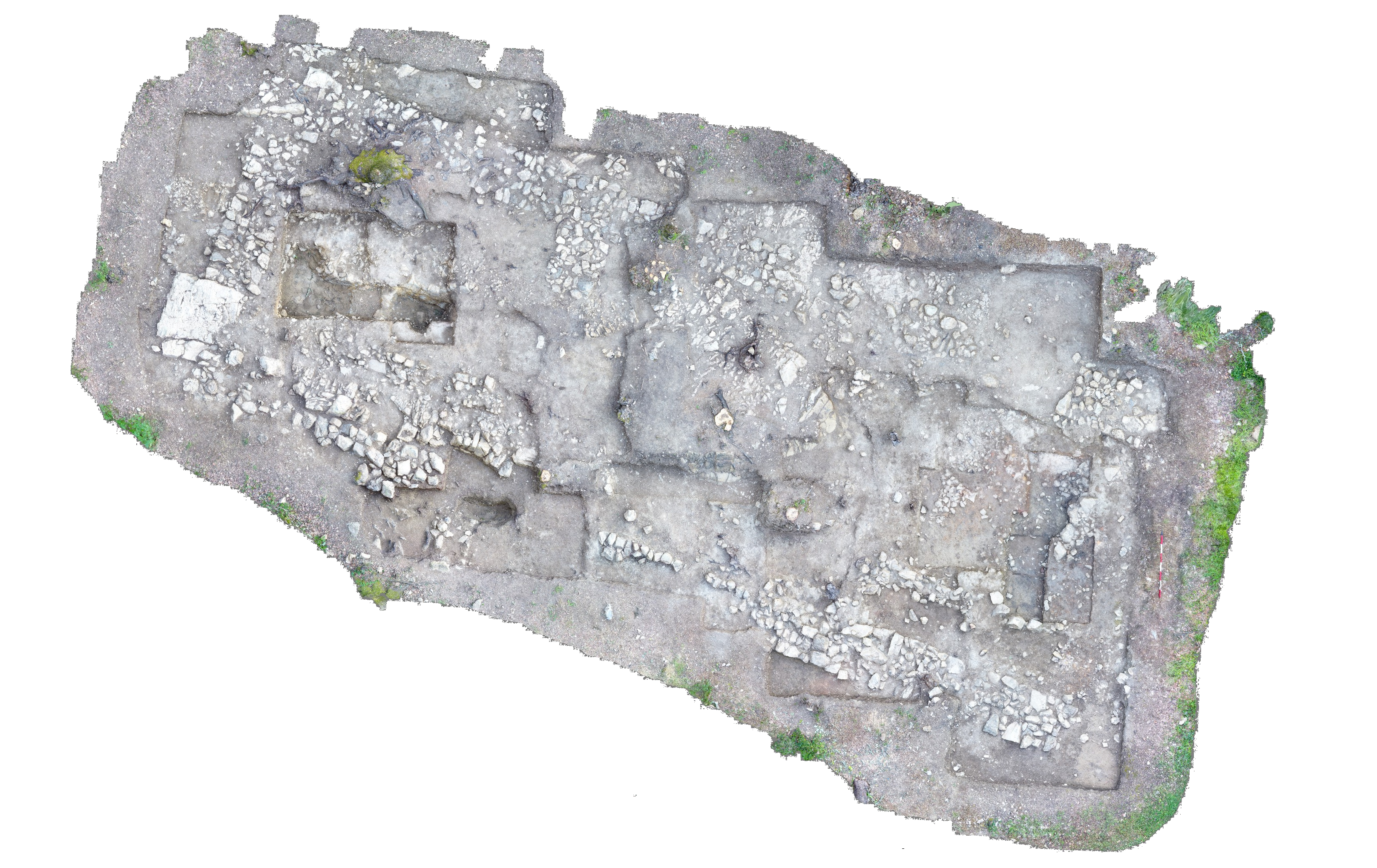Document Content
Conclusion
Conclusion:
The result of excavation in CC-7, which consisted of the origional 4x4 trench and five additional extensions, revealed a central large oval rock feature that was located in a carbon rich soil. The northern half of the rock feature was exposed while excavating the origional 4x4 trench. There was a very clearn distinction between the carbon rich soil of the rock feature and teh sterile soil surrounding it, and it appeared as if the rock feature curved along its northwest and northeastern boarders to the south. A theory developed that this could possibly be a packed floor for a hut or production area, so the decision was made to extend the trench south and east of the original trench (L shaped), and revealed more of the feature, but did not show the extent of its boundries. A second extension was opened on the east side, because it appeared as if the feature was curving towards the west on the southeastern corner, but again the result did not show the extent of the feature's boundaries or reveal a full circular curve. A third extension was opened on the southeast corner in hopes that we would find a circular curve, and the result was a clearn boundary to the roch feature surrounded by more galestra-like soil. The modern road is located approximately 1 meter south of the third extension, and it is possible that the rock feature was disturbed when
the road was cut, soa fourth extension was opened on the southwestern corner to see if the rock feature curved toward the east. The fourth extension revealed a definite boundary surrounded by more galestra-like sterile soil. A final extension was opened on the eastern wall in hopes that an eastern boundary would be seen, and a clear boundary was defined. The overall result was a large oval of rocks, not a circular formation. The material was not just located on top of the feature, it was also located within the rock feature. We did not excavate into the feature because we were treating it as architectural evidence and were focused on findnig tthe boarders, leveling the floor in order to identify possible post holes and continuously defining the rocks within.
The carbon rich soil directly above and within the rock featuer had a high concentration of material that included very worn terracotta, which could possibly be present due to erosion from the hill, poottery that consisted of primarily courseware and impasto sherds typologically consistent with examples knwon to be associated with the Orientalizing phase of Piano del Tesoro,s occupation, worked bone and antler, a small amount of bronze fragments, and a small area preserving a high concentration of murex shells. The material recovered
included many domestic items such as intact stamped rocchetto, partial rocchetto fragments, a loom weight fragment, and near full profiles of pottery. The material found within this feature, especially the number of vessels with ancient joins, along with the clear delineation of soils, allows for the conclusion that this is an intentional deposition. Two theories concerning the ancient use of this area can be deduced based on this evidence. The large amount of domestic material and the fact that it was very well preserved could be indicative of domestic occupation, and the concentration of murex shells, which are not indigenous to this area, and were used to produce purple dye for textiles, could possibly indicate an area used for production. No evidence of postholes or other architectural evidence was exposed, but the size of the rocks and the high concentration of domestic material are indicative of an intentional deposition as opposed to erosion. With the absence of more evidence to support an architectural structure, a second theory has been proposed that this area served as a midden. More excavation and analysis of the CC-7 and surrounding area will clarify these equal possibilities.
| Descriptive Attribute | Value(s) |
|---|---|
| Document Type | Trench Book Entry |
| Trench Book Entry Date | 2007-08-01 |
| Entry Year | 2007 |
| Start Page | 151 |
| End Page | 155 |
| Title | Conclusion |
| Descriptive Attribute | Value(s) |
|---|---|
| Is Part Of Vocabulary: DCMI Metadata Terms (Dublin Core Terms) | JAH/JLL II Vocabulary: Murlo |
Suggested Citation
Jennifer A. Hogg, John L. Lape. (2017) "JAH/JLL II (2007-08-01):151-155; Conclusion from Europe/Italy/Poggio Civitate/Civitate C/Civitate C 7/2007, ID:588/Locus 7". In Murlo. Anthony Tuck (Ed). Released: 2017-10-04. Open Context. <https://opencontext.org/documents/5abf894c-abe2-478e-966a-7cd200ebfbfe> ARK (Archive): https://n2t.net/ark:/28722/k29k4n61t

Copyright License
To the extent to which copyright applies, this content
carries the above license. Follow the link to understand specific permissions
and requirements.
Required Attribution: Citation and reference of URIs (hyperlinks)







